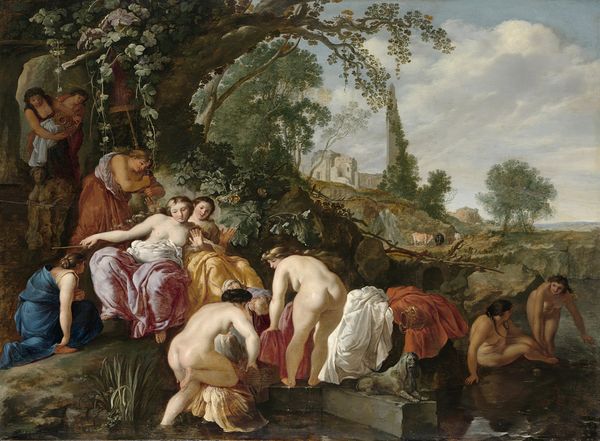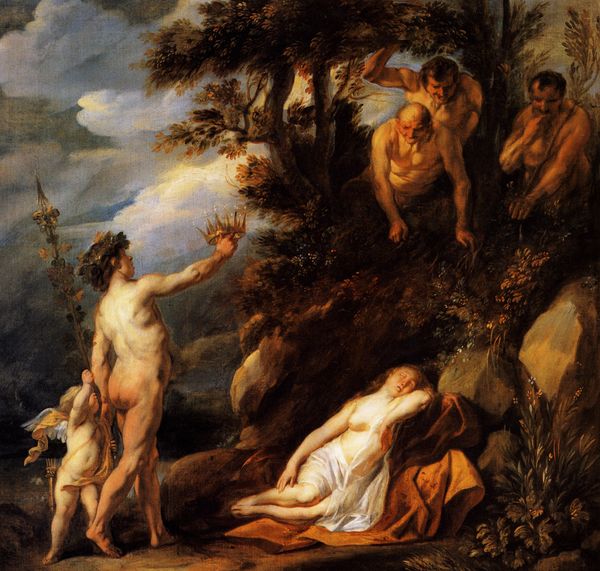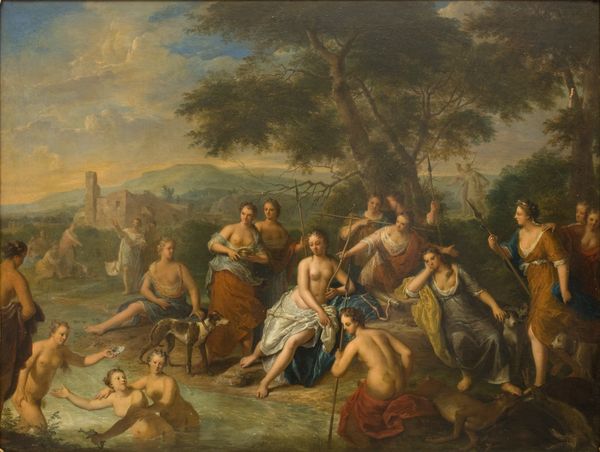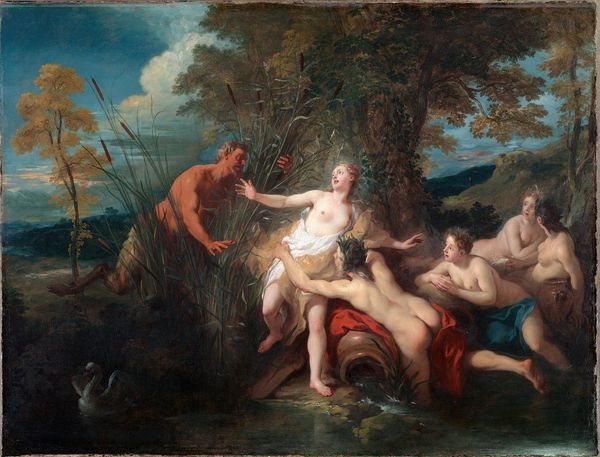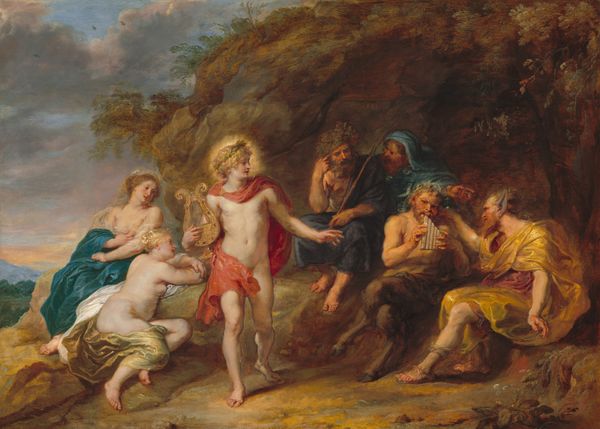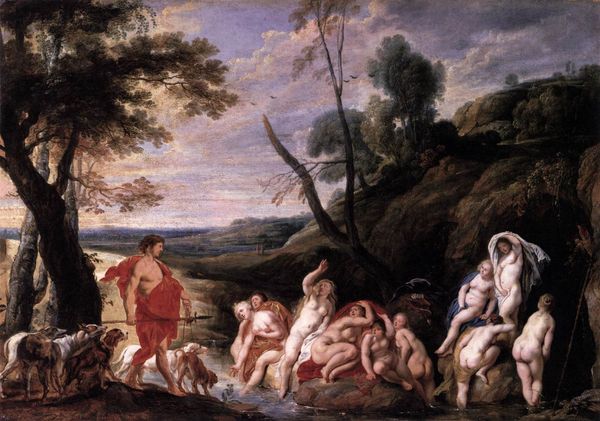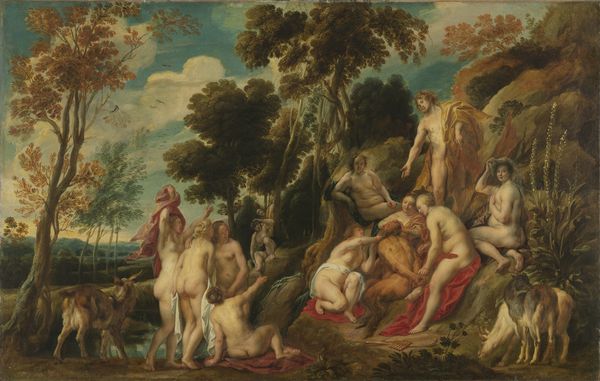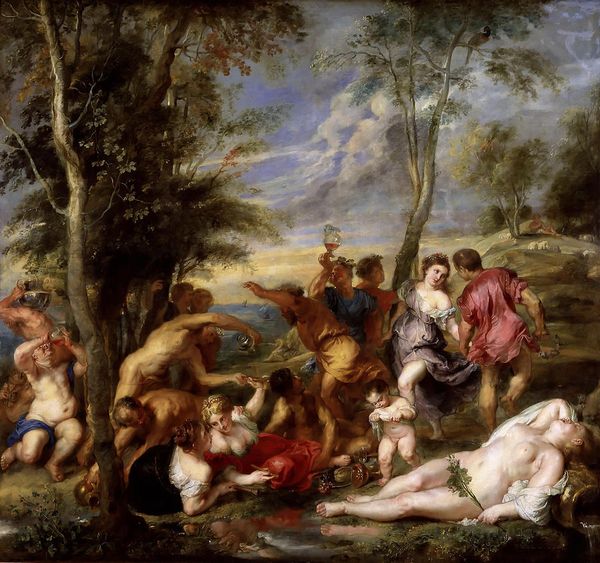
painting, oil-paint
#
allegory
#
baroque
#
painting
#
oil-paint
#
landscape
#
figuration
#
oil painting
#
mythology
#
history-painting
#
nude
#
rococo
Copyright: Public domain
Editor: This painting, "Messengers of Godfrey of Bouillon in Gardens of Armida" by François Lemoyne, showcases a dramatic encounter rendered in oil. It’s a busy composition, almost theatrical, and my eye is drawn to the contrast between the armored figures and the lounging nudes. How do you interpret this clash of worlds? Curator: This painting exemplifies the Rococo fascination with combining classical themes and theatrical displays. Think about the audiences viewing this; this wasn't just art for art's sake. Lemoyne is using the visual language of the time to comment on power, seduction, and the disruptive nature of duty. What statement do you think he is trying to convey? Editor: Perhaps that duty and desire are eternally in conflict? The messengers look shocked, almost like they've stumbled into something forbidden. It’s all so staged. Curator: Precisely. Consider the patronage system: Lemoyne relies on wealthy individuals who likely commissioned such pieces. Therefore the social expectation of these paintings wasn't necessarily shock, but rather moral tales told through visual delights. They highlight the tension between public responsibility, represented by the messengers, and the allure of private pleasures, epitomized by Armida and her nymphs. The placement of an archway also begs one to ponder the construction of identity, class, and cultural norms. Editor: So the painting itself is a commentary on the social roles and expectations of its time, and how artists had to create works in adherence with such expectations. Fascinating. Curator: Yes, we might look beyond surface beauty and consider how art reflects and reinforces social structures, particularly the expectations placed on different genders and social classes in 18th-century France. Looking closer at art allows us a window into power dynamics that shaped the production and interpretation of artworks. Editor: That’s a fresh perspective. I always viewed these paintings through their aesthetics, but understanding their social context makes them much more engaging. Curator: Precisely. Examining these historical details illuminates the public function of art and political meanings attached to it.
Comments
No comments
Be the first to comment and join the conversation on the ultimate creative platform.

